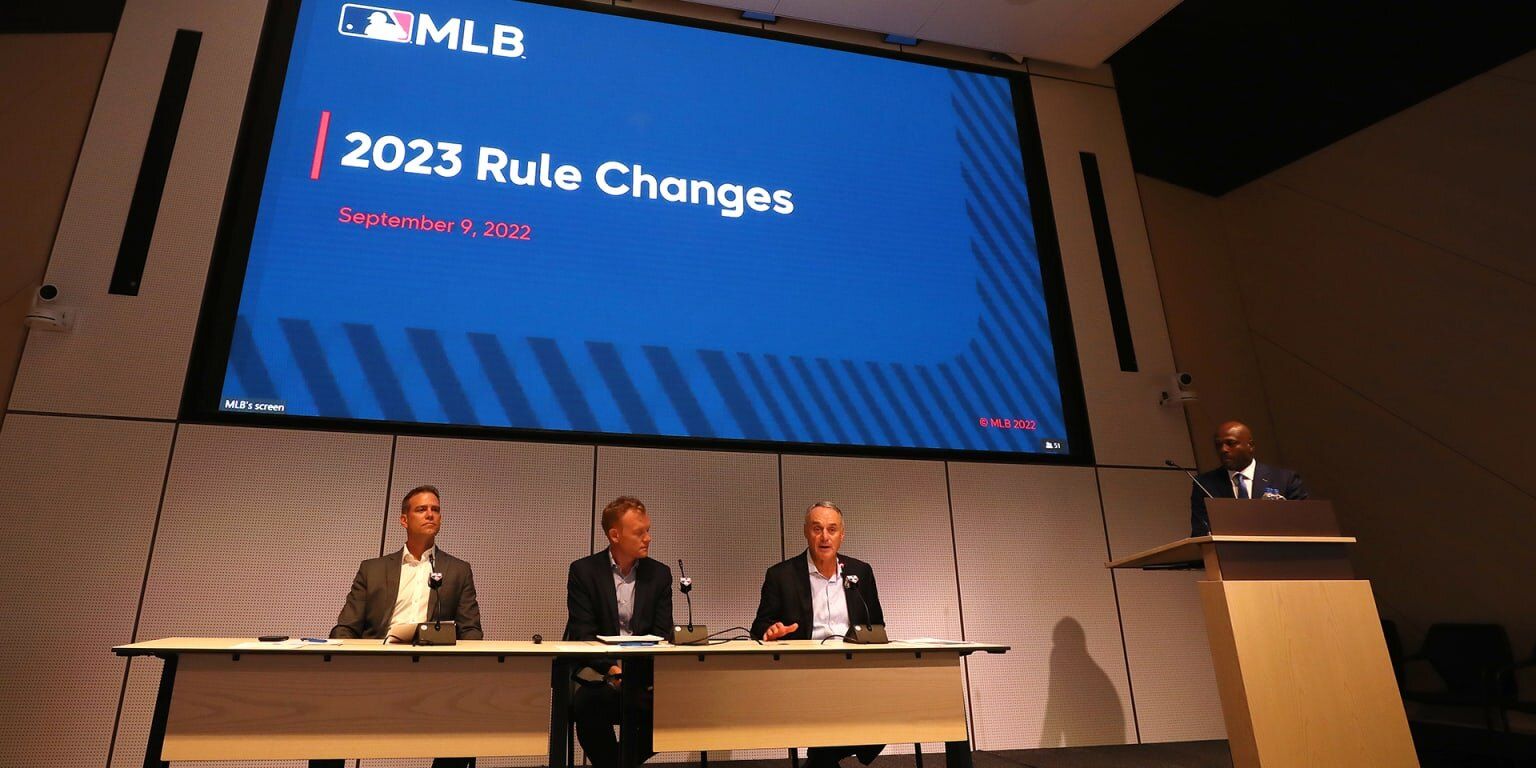In an effort to better the pace of play and keep fans engaged with the game, Major League Baseball has voted to introduce some new rules into the game next season. Pitch clocks, larger bases, and shift bans will all be part of the game come next year.
The biggest new rule: the ban on shifts. Infielders will now be forced to keep two feet in contact with the infield dirt, as well as having two infielders on both sides of second base.
Over the past decade, many MLB organizations have turned to analytic styles of strategy–playing where batters were most likely to hit the ball. This has led to a decrease in batting averages, and hitters trying to hit it over the shift instead of away from it.
Pitchers are throwing harder, so it makes it harder to steer the ball the opposite way. But it looks like MLB is bailing their hitters out. More offense is always better, and this would send baseball back to its original structure.
The shift ban also hopes to be a more inviting way for players to put the ball in play. Batters will take pitches to try and draw a perfect pitch to try and hit over the fence. This puts them in bad counts and leads to more strikeouts, increasing the length of games.
MLB is trying to speed up the games while also creating more action. The pitch clock has always been in talks, and will now be enforced. With no runners on base, pitchers will be given 15 seconds to deliver a pitch or be penalized with an automatic ball. With runners on base, it will be 20 seconds.
Hitters get one timeout per plate appearance to balance the pace on both sides. After the pitch clocks were tested in the minor leagues, there was a 26-minute average reduction in game time. 3 hours, 15 minutes will now turn into 2 hours, 45 minutes–a much more manageable pace of play.
Finally, the bases will be expanded in size. They will go from 15 inches square to 18 inches square. This is primarily for player safety to avoid collisions and stepping on players when there are close plays at first.
An underlying impact: MLB hopes this will also invite more stolen bases. With less distance between bases, there can be a resurgence in the running game. The Major League lead in stolen bases this season is 32. While a respectable number, MLB hopes to see the return of speedsters swiping over 50 bags.
This could also lead to more offense with runners in motion, the defense in motion, and players putting the ball in play more. A more exciting game is possibly on the horizon.
The fan response has been mostly positive. A more engaging game means no droning on into the late hours of the night.
“I hated the shift,” said Ken, a Long Island caller into Sirius XM’s MLB Radio. “I thought it was the most unnatural looking thing on the baseball field.” Many fans are in agreement, but there are also fans that just want the game left alone.
Some fans argue the game grows and changes naturally, and too much intervention takes away from the core idea of baseball. It is yet to be seen just what kind of impact these rules will have, but there could be amendments if the rules indeed take too much of a toll on the game.
On the horizon, robot umpires and automatic strike zones could be incorporated as well. In the minor leagues, they allow pitchers to challenge pitches at a fixed rate. If a pitcher disagrees with a call, they tap their head and the call is radioed down to the umpire, taking all of 5 seconds.
If that is the route MLB elects to go with the strike calling, that would not hurt the game too badly and may actually help it. Too many umpires make too many egregiously awful pitch calls. Calls on the field are allowed to be challenged. It may be time for pitches to be challenged, too.
There is a balance to be had, though. Too much change will drive fans away. But there is some room for improvement. 2023 will be an intriguing season on many fronts.




